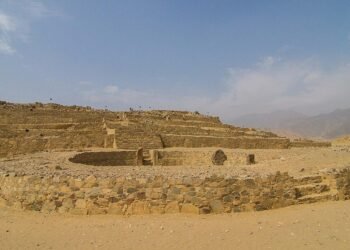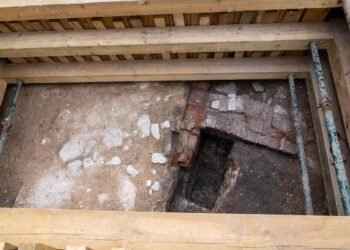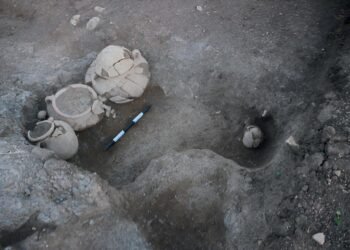Archaeological excavations at the Anciens Arsenaux site in Sion, Switzerland, have yielded groundbreaking insights into early agricultural practices, challenging previous beliefs and reshaping our understanding of the Neolithic period in Europe.

Researchers have uncovered evidence suggesting that Neolithic farmers in the region were employing animal traction to pull plows as early as 5,100 to 4,700 years ago, nearly a millennium earlier than previously thought.
Located on the fertile alluvial cone of the Sionne, an Alpine torrent that flows through the town before joining the Rhône, the site’s excavation in 2017 by researchers working for the Valais Cantonal Archives revealed layers of human occupation intermingled with alluvial deposits spanning the Neolithic period from approximately 5200 to 3500 BCE.
The significance of these alluvial deposits cannot be overstated, as they played a crucial role in preserving the ancient plow marks. Typically susceptible to erosion or agricultural disturbances, the furrows in Sion endured due to the rapid sedimentation of the surrounding stream, encapsulating the impressions within the soil layers.

The discovery of parallel furrows and hoofprints at the site provides compelling evidence of plow-like tools being pulled by domesticated cattle or oxen during the early Neolithic period. This finding challenges prior assumptions that northern Germany and Denmark were the epicenters of early animal traction in European agriculture, with evidence dating back approximately 3,700 years.
Radiocarbon dating of organic materials found above and below the soil disturbances provided conclusive evidence of the antiquity of the plow marks. The findings suggest that animal traction emerged concurrently with the advent of agriculture itself, representing a pivotal innovation that revolutionized agricultural productivity and societal dynamics.

“Our research has provided a solid chronological framework for the earliest known plow marks in Europe, dated between 5100 and 4700 BCE. These remains demonstrate that the use of animal power appeared quite soon after the first evidence of a production economy in the Alps,” the researchers write in their paper.
The implications of these findings extend beyond technological innovation, reshaping our understanding of agricultural intensification and its societal repercussions during the Neolithic expansion across Europe. The ability to cultivate larger fields with animal traction likely fueled economic stratification and social complexity, challenging conventional narratives about the pace and trajectory of agricultural development.
The researchers note that animal traction is an important innovation that may have had considerable implications for economic and social development during the Neolithic period, mainly in terms of increased output and subsequent wealth inequality.

Furthermore, these discoveries prompt a reevaluation of long-standing theories about the pace of agricultural intensification and its impact on society during the expansion of agriculture across Neolithic Europe. The ability to work larger fields with animal traction may have been an integral part of the initial processes of the continent’s Neolithisation, rather than a later revolutionary development.
The unique alpine environment of Sion likely played a crucial role in preserving evidence of early plow use, offering fertile ground for future explorations into the origins of animal traction in agriculture. To further investigate these origins, the archaeological team plans to extend their excavations to similar alpine settings throughout Switzerland and Italy.






















